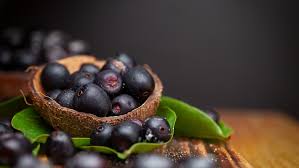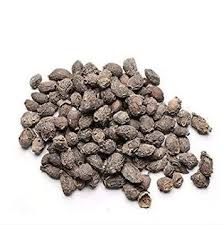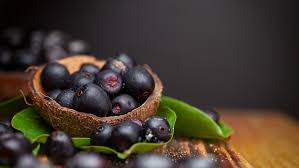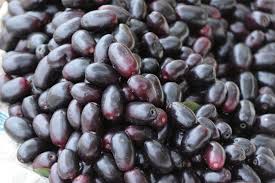
Supporting Eye Health with Paneer Dodi
Paneer Dodi, also known as Withania Coagulans, is an ancient Ayurvedic herb widely used for its therapeutic properties. Often celebrated for its benefits in diabetes and liver health, its potential in supporting eye health is gaining increasing attention. With eye-related disorders becoming more common due to lifestyle changes and excessive screen time, natural remedies like Paneer Dodi offer a traditional yet promising approach. This article explores how Paneer Dodi supports eye health, its Ayurvedic significance, methods of use, and tips to maximize its effectiveness naturally.
Long Description (Approx. 2000 words)
What Is Paneer Dodi?
Paneer Dodi (Withania Coagulans) is a medicinal herb found in various parts of India. Known for its bitter taste and potent properties, it has long been used in Ayurvedic and Unani systems of medicine. Traditionally, Paneer Dodi is consumed after soaking its dried flowers in water overnight and drinking the infused water the next morning.
Ayurvedic View on Eye Health and Herbs
In Ayurveda, the eyes are governed primarily by the Pitta dosha, especially the Alochaka Pitta, which is responsible for vision. Disturbances in Pitta due to stress, toxins, poor diet, and lifestyle contribute to issues like dry eyes, blurred vision, or even progressive disorders like cataracts or macular degeneration. Herbs that cool the system, reduce inflammation, detoxify the body, and nourish the eyes are often recommended—and Paneer Dodi aligns well with these principles.
Benefits of Paneer Dodi for Eye Health
- Rich in Antioxidants
Paneer Dodi contains natural antioxidants that combat oxidative stress. Free radicals are one of the primary causes of age-related eye diseases like macular degeneration and cataracts. The herb’s antioxidant activity helps neutralize these radicals, protecting the delicate tissues of the eye. - Anti-Inflammatory Properties
Many eye problems, including conjunctivitis, uveitis, and chronic dry eye, are linked to inflammation. Paneer Dodi’s anti-inflammatory nature aids in reducing redness, irritation, and swelling of the eyes. - Blood Sugar Regulation
High blood sugar is a leading contributor to diabetic retinopathy, a condition that damages the blood vessels in the retina. Paneer Dodi is known for regulating blood sugar levels, indirectly supporting eye health in diabetic patients. - Detoxifying the Body
Ayurveda believes that Ama (toxins) accumulation is a major reason for disease. Paneer Dodi supports liver health and flushes toxins from the body, which in turn can clear the pathways to better ocular function. - Improving Circulation
Good blood circulation is vital for delivering nutrients and oxygen to the eye tissues. Paneer Dodi enhances blood flow naturally, helping keep the optic nerve and retina nourished.
How to Use Paneer Dodi for Eye Health
- Soaked in Water (Traditional Method)
Soak 10-15 dried flowers of Paneer Dodi in a glass of water overnight.
Strain in the morning and drink the water on an empty stomach.
Continue for 30-60 days for visible effects.
- In Herbal Teas
Boil Paneer Dodi with Triphala, another eye-supportive herb.
Drink this as a herbal tea in the evening for holistic benefits.
- Paneer Dodi Capsules or Powder
Available in Ayurvedic stores, these are convenient alternatives. Always consult an Ayurvedic practitioner for the proper dosage. - With Amla and Honey
Mix crushed Paneer Dodi with Amla juice and a teaspoon of honey.
Consume this mixture every morning to improve vision clarity.
Safety and Precautions
Consultation Required: Always consult a physician, especially if you are on other medications.
Not Recommended in Pregnancy: Avoid use during pregnancy and breastfeeding unless advised.
Dosage Discipline: Overuse may cause side effects like nausea or stomach discomfort.
Other Ayurvedic Herbs to Combine with Paneer Dodi
Paneer Dodi works best when used with complementary herbs:
Herb Benefit for Eyes
Triphala Supports vision clarity and eye detox
Amla Rich in Vitamin C, rejuvenates eye tissues
Bhringraj Nourishes optic nerves
Gotu Kola Improves microcirculation in the eyes
Neem Reduces inflammation and clears eye infections
Holistic Eye Health Tips Alongside Paneer Dodi
Practice Eye Yoga – Exercises like Tratak and eye-rolling improve muscle strength.
Use Rose Water Drops – Helps soothe tired eyes naturally.
Blink More Often – Especially if you work on screens all day.
Stay Hydrated – Dehydration can worsen dry eyes.
Eat Eye-Friendly Foods – Carrots, leafy greens, and almonds support eye function.
Sleep Well – Eyes rejuvenate while we sleep.
Scientific Research on Paneer Dodi and Vision
While traditional use supports its benefits, modern science is still catching up. Preliminary studies on the antioxidant and anti-diabetic properties of Paneer Dodi show promise for vision-related disorders, especially those linked with diabetes. Future research may establish more concrete links between Paneer Dodi and direct improvements in eye health.
Conclusion
Paneer Dodi is more than just a traditional remedy for diabetes—it holds hidden potential for eye health, especially when used regularly and wisely. Its ability to reduce inflammation, support blood sugar control, detoxify the body, and improve circulation makes it a well-rounded herb in Ayurvedic ocular care. At dirghaanshi, we promote the time-tested wisdom of nature, and Paneer Dodi is a shining example of how traditional herbs can fit into modern health routines.












